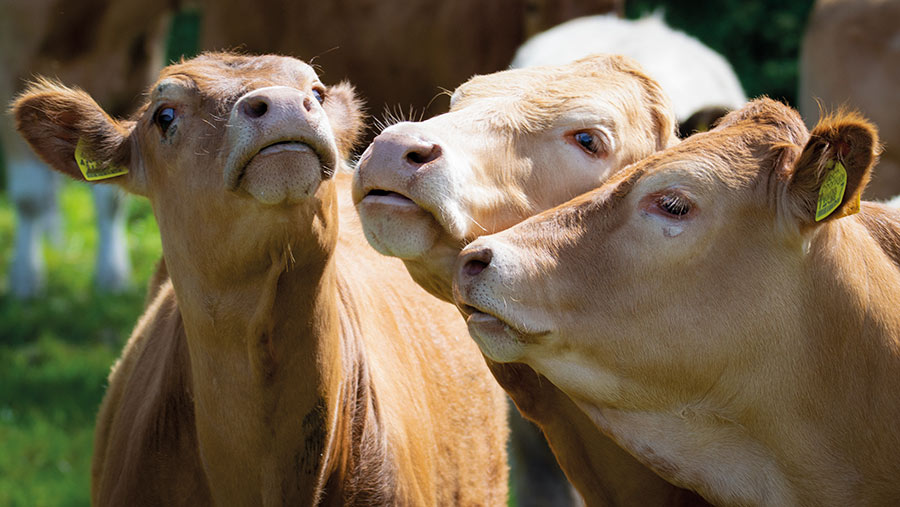Winter costs: Why beef and sheep farms should plan ahead now
 © Adobe Stock
© Adobe Stock Dramatic cost increases mean cashflow plans should be made now for livestock so businesses are not faced with difficult decisions come the autumn.
“The earlier the better” is the mantra of farm consultants working with beef and sheep producers to help them understand how massive rises in feed, fertiliser and fuel prices will affect cashflow.
Beef and sheep advisers Rachel Megarrell and John Moore from the College of Agriculture Food and Rural Enterprise (Cafre) told Farmers Weekly that rising input costs had already impacted farmer behaviour.
See also: Ulster farmers must act to avoid forage crisis
“Farmers have shied away from some youngstock at markets this spring,” said Mr Moore. “But it might be a strategy for some businesses to cash heavy animals, which are well sought after, and buy cheaper, young animals to graze.”
Specific decisions would depend on individual farms, he said. “The important thing is to a have a plan and keep that plan updated as prices, forage stocks and stocking rates change.” (see “Control what you can control”, below)
Running a cashflow forecast is best done in conjunction with a winter fodder plan, so the effect of marketing decisions can be considered alongside the fortunes of the wider business and winter fodder demand and supply.
Take control
“A good summer could alleviate a lot of issues, but that can’t be relied upon,” adds Mr Moore. “Planning different scenarios around selling stock early or buying in feed to bridge any gaps will help decision making. The worst thing could be heading into autumn with a fodder shortage and being a price taker on stock.
“Some clients have found that a combination of higher fertiliser, fuel and contractor costs have put £7-£10/t on silage costs in the pit. If it costs £80 more to feed a cow through the winter [8t a cow over a six-month winter) that’s £80 a calf the business needs to find just to stand still.”
Cashflow planning tips
- Plan the next 12 months estimating income and costs (based on current prices) to enter and leave your account. Use last year’s accounts or VAT book to help you
- This helps inform decision making on stock selling to reduce or avoid costs
- Limit costs by carrying no passengers, selling surplus stock, and maximising quality bonuses if a return can be shown
- Remember to monitor the cashflow, use detailed figures and update them when information flows in
- Identify vital spending and watch knock-on effects on health, yield, growth rate, efficiency, fertility and so on. Beware of false economies (see example below). Will saving on spring costs increase winter costs?
- A free cashflow planner is available at cafre.ac.uk/cafrecashflow for ruminants, pigs, poultry and arable
Example: A farm takes two silage cuts from 10ha (25 acres). The fertiliser costs £600/t. Buying 30% less will save £1,150 from the fertiliser bill.
But using less fertiliser means 17.5t dry matter (-20%) less production.
To replace this with bought-in silage at £35/t fresh weight = £2,450 cost
To replace it with 20t of concentrate at £275/t = £5,500 cost
Control what you can control
There are major gains some farms can still make:
- Rotational grazing: Even a simple system of subdividing larger fields where there are water troughs, and mobbing up animals, so a maximum grazing time of three days is spent on each pasture, is worthwhile
- Use of clover: Whether stitched in or sown in renewed leys, clover can protect the farm against protein feed and nitrogen fertiliser costs
- Soil health: Investing time and money in soil health by investigating compaction, paying for soil analyses and correcting mineral and pH levels, will maximise the impact of the fertiliser you have managed to buy.
